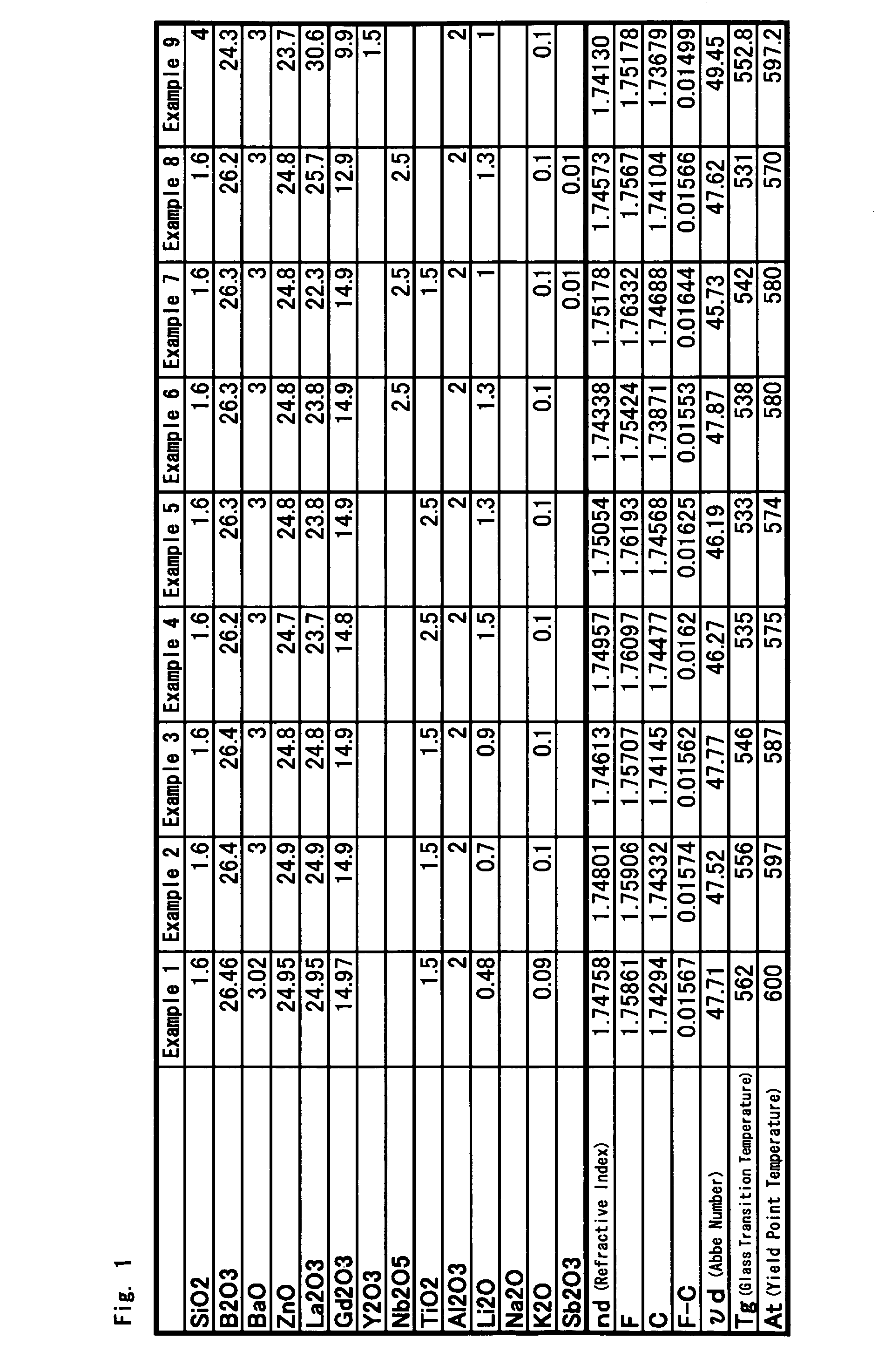Optical glass and optical element
a technology of optical elements and optical glass, applied in the field of optical glass, can solve the problems of high production cost, high raw material price, and high production cost of glass raw materials
- Summary
- Abstract
- Description
- Claims
- Application Information
AI Technical Summary
Benefits of technology
Problems solved by technology
Method used
Image
Examples
Embodiment Construction
[0028]Hereafter, Examples of the present invention will be described. The present invention is not limited to these Examples.
[0029]The optical glass of the Examples 1 to 9 of the present invention was obtained by weighing and mixing ordinary optical glass raw materials such as oxide, carbonate, hydroxide, and nitrate so as to attain a composition ratio of the Examples, putting the mixture into a platinum crucible, melting the mixture at 1300 to 1400° C. for one to two hours, stirring and leaving the mixture to stand quietly for homogenization, and casting the mixture into a mold. The cast glass was gradually cooled at a speed of −2.3° C. / 1.0 hour to produce a sample.
[0030]The composition and the optical characteristics of each Example are as shown in FIG. 1. Here, the refractive index measurement (nd) and the Abbe number were obtained by using a sample that had been cooled at a speed of −2.3° C. / 1.0 hour. For the measurement, the Abbe number was calculated by using KPR30 manufacture...
PUM
| Property | Measurement | Unit |
|---|---|---|
| Abbe number | aaaaa | aaaaa |
| Abbe number | aaaaa | aaaaa |
| Tg | aaaaa | aaaaa |
Abstract
Description
Claims
Application Information
 Login to View More
Login to View More - R&D
- Intellectual Property
- Life Sciences
- Materials
- Tech Scout
- Unparalleled Data Quality
- Higher Quality Content
- 60% Fewer Hallucinations
Browse by: Latest US Patents, China's latest patents, Technical Efficacy Thesaurus, Application Domain, Technology Topic, Popular Technical Reports.
© 2025 PatSnap. All rights reserved.Legal|Privacy policy|Modern Slavery Act Transparency Statement|Sitemap|About US| Contact US: help@patsnap.com


